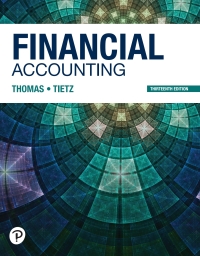Question
This exercise parallels the machine-purchase decision for the Mendoza Company that is discussed in the body of the chapter. Assume that Mendoza is exploring whether
This exercise parallels the machine-purchase decision for the Mendoza Company that is discussed in the body of the chapter. Assume that Mendoza is exploring whether to enter a complementary line of business. The existing business line generates annual cash revenues of approximately $5,700,000 and cash expenses of $3,810,000, one-third of which are labor costs. The current level of investment in this existing division is $12,350,000. (Sales and costs of this division are not affected by the investment decision regarding the complementary line.) Mendoza estimates that incremental (noncash) net working capital of $44,000 will be needed to support the new business line. No additional facilities-level costs would be needed to support the new linethere is currently sufficient excess capacity. However, the new line would require additional cash expenses (overhead costs) of $470,000 per year. Raw materials costs associated with the new line are expected to be $1,550,000 per year, while the total labor cost is expected to double. The CFO of the company estimates that new machinery costing $4,250,000 would need to be purchased. This machinery has a seven-year useful life and an estimated salvage (terminal) value of $680,000. For tax purposes, assume that the Mendoza Company would use the straight-line method (with estimated salvage value considered in the calculation). Assume, further, that the weighted-average cost of capital (WACC) for Mendoza is 10% (after-tax) and that the combined (federal and state) income tax rate is 41%. Finally, assume that the new business line is expected to generate annual cash revenue of $4,300,000. Required: Determine relevant cash flows (after-tax) at each of the following three points: (1) project initiation, (2) project operation, and (3) project disposal (termination). For purposes of this last calculation, you can assume that the asset is sold at the end of its useful life for the salvage value used to establish the annual straight-line depreciation deductions; further, you can assume that at the end of the projects life Mendoza will fully recover its initial investment in net working capital.



Step by Step Solution
There are 3 Steps involved in it
Step: 1

Get Instant Access to Expert-Tailored Solutions
See step-by-step solutions with expert insights and AI powered tools for academic success
Step: 2

Step: 3

Ace Your Homework with AI
Get the answers you need in no time with our AI-driven, step-by-step assistance
Get Started


